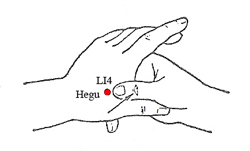Amniotic fluid is produced during the early weeks (the first 14 weeks) of your pregnancy as fluid moves from the bloodstream into the amniotic sac. As the baby matures during the second trimester of your pregnancy, he swallows the amniotic fluid and excretes it back into the amniotic fluid. Most of the time, your body and the developing baby will regulate the amount of amniotic fluid. Occasionally, there may be too little fluid (oligohydramnios) or too much amniotic fluid (polyhydramnios). Read on to learn when you should worry about your amniotic fluid being too much or too little.
How Much Amniotic Fluid Should I Normally Have?
In a normal pregnancy, your body will produce amniotic fluid until about 36 weeks of pregnancy. Typically, you will have about one quart of fluid (800-1000 ml of fluid) before it starts gradually decreasing after 36 weeks. Polyhydramnios (having too much amniotic fluid during any stage of pregnancy) occurs in only about 1 percent of all pregnancies although mild cases may not be detected since you may be asymptomatic.
How to Know If I Have Too Much Amniotic Fluid
The healthcare provider taking care of you during your pregnancy will keep track of the size of your uterus during your pregnancy. The provider may also be more concerned if you start having abdominal or back pain, shortness of breath or swelling in your hands and feet. If the uterus starts to grow more rapidly than expected, your physician or midwife may order an ultrasound to get a measurement of how much amniotic fluid is in your uterus. After the ultrasound, your doctor will determine where you rate on the “amniotic fluid index (AFI)”. During the 3rd trimester, your healthcare provider may suggest further tests if your AFI is higher than 25 cm. the normal measurement is 5-25 cm in the third trimester.
If you are experiencing polyhydramnios, you may begin to notice more indigestion and heartburn, swollen legs and hands, excessive stretch marks, and increased varicose veins.
Is It Serious?
Polyhydramnios may not cause any problems; however, your healthcare provider will follow you carefully since you will run a higher risk of early disruption of the placenta leading to premature labor and delivery. Too much amniotic fluid can also lead to premature rupture of membranes leading to early delivery. If the polyhydramnios is excessive, the baby’s growth may be restricted and deformities of the skeleton may result. Too much amniotic fluid can also lead to a doubled chance of stillbirth and postpartum bleeding.
Watch a video to learn more about amniotic fluid: function of amniotic fluid and when to worry about too much/ little amniotic fluid
What Are the Causes of Too Much Amniotic Fluid?
There are several problems that can result in too much amniotic fluid. These problems include:
- Maternal diabetes that is not appropriately controlled. Polyhydramnios is present in about ten percent of mothers with diabetes.
- If you are carrying more than one baby, your risk of having too much amniotic fluid is much more likely. In many cases of multiple births, one of the babies may have too much fluid and the other may have too little.
- If the baby has certain birth defects or medical problems, she may stop swallowing the amniotic fluid while her kidneys continue to excrete urine. Cleft lip, pyloric stenosis, and hydrocephaly are common problems that can lead to polyhydramnios.
- Other causes. There seems to be a relationship between high levels of amniotic fluid and certain genetic abnormalities (e.g., Down syndrome). Finally, too much amniotic fluid may be a sign of certain anemic blood disorders in the baby or infectious diseases.
How to Deal with Too Much Amniotic Fluid
Again, if your healthcare provider suspects polyhydramnios, she will order an ultrasound and perhaps an amniocentesis. You will probably also have regular non-stress tests during the remainder of your pregnancy to determine if you are experiencing early labor and to monitor your baby’s development. If your provider suspects that you are diabetic, she will test you and start treating you now. If your water breaks before you go into labor, your provider will want you in the hospital for monitoring. During delivery, your healthcare provider will monitor you to be sure the cord does not prolapse through the cervix, cutting off the blood and nutrient supply to the baby. Specific treatments may include:
- Treatment for the underlying disease.
- Drainage of amniotic fluid through an amniocentesis – also caused amnioreduction. This treatment will be used only when absolutely critical since it can cause premature labor and delivery.
- Your physician may start you on indomethacin that can help reduce amniotic fluid volume. This oral medication is typically only prescribed before 31 weeks.






